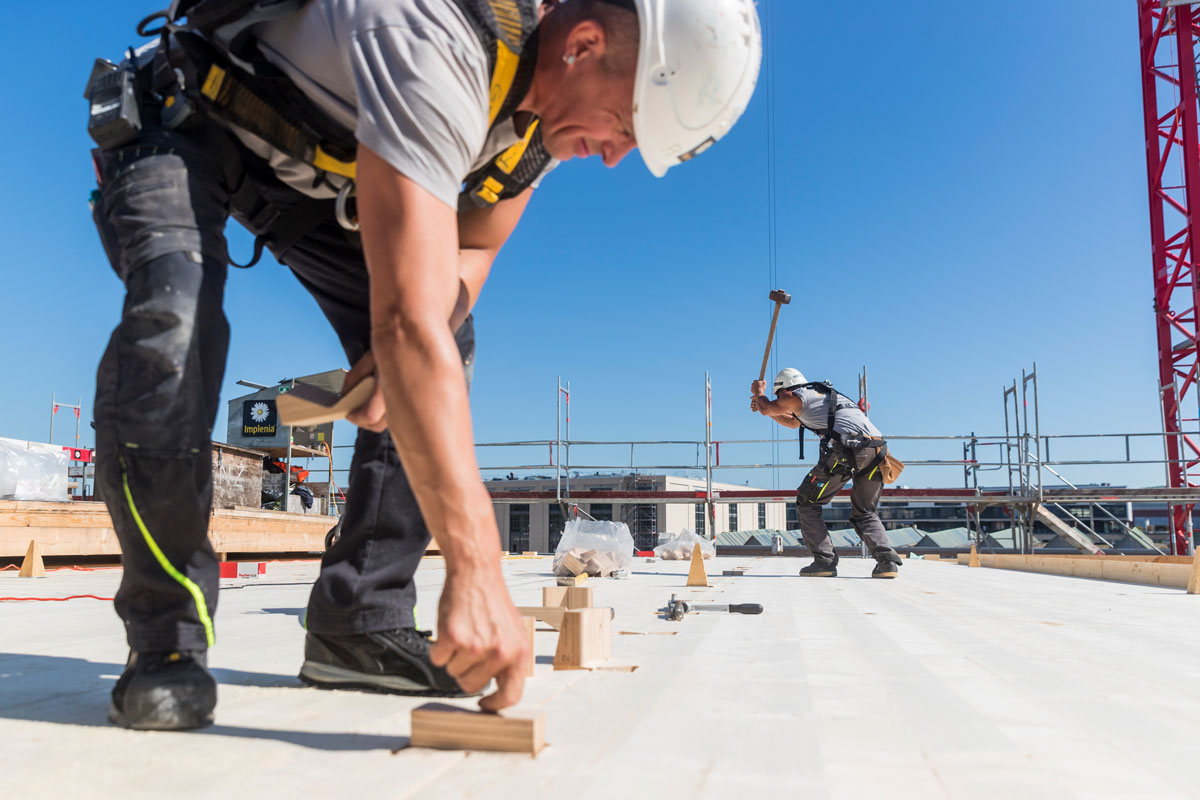
Achieving the climate targets with timber buildings
Energy and climate have been among the political priorities of many Swiss cities, and not just since young people started making their voices heard in the climate movement. Overall, 60 per cent of the Swiss population already
live in so-called energy cities. Winterthur, for example, is currently one of 48 Swiss municipalities that have been awarded the Energy City Gold label for their particularly strong commitment to a more efficient use of energy, climate protection, the promotion of renewable energies and environmentally compatible mobility.
Building sector is central
However, the city of Eulach has already embarked on a more far-reaching sustainability path. In 2012, in a referendum, the population set the even more stringent goals of the 2000-watt society by 2050. A central field of action on this path is the area of buildings and settlements. Among other things, it is responsible for more than 40 percent of greenhouse gas emissions in Winterthur. And this is precisely where the natural material wood comes into play. Wood can not only be produced and processed in an extraordinarily energy-efficient way. Trees store CO2 from the air as they grow, thereby ensuring a negative greenhouse gas balance. Compared to other building materials, each tonne of wood saves about 5.6 tonnes of CO2.
Greater savings potential than in air transport
Two figures show how great the potential is overall: On the one hand, the building materials concrete and steel are responsible for about 8 per cent of CO2 emissions worldwide (air traffic for about 3 per cent).
percent). On the other hand, researchers at ETH Zurich caused a sensation last July with a study according to which two thirds of all CO2 released by human activities could be removed from the atmosphere by consistently afforesting all possible land areas worldwide.
Wooden buildings increase the storage capacity of forests
The effect of afforestation is further enhanced when wooden buildings are constructed from the trees. The CO2 remains stored in the building material even during the lifetime of the buildings and newly growing trees can absorb further greenhouse gas during this time. Instead of only during the approximately 70 years of tree growth, a forest can thus absorb CO2 for roughly 140 years and the storage capacity is practically doubled.
Up to 30 percent less grey energy
How wood affects the sustainability balance of buildings is exemplified by the "Krokodil" project in Winterthur. The perimeter block development with its 254 cooperative, rental and owner-occupied flats is part of Lokstadt, which is being built on the site of the former Swiss Locomotive and Machine Factory (SLM) and is striving for the demanding certificate as a "2000-watt site". "Fundamental to the energy balance in the operation of buildings is a construction method that is as compact as possible. In addition to this, wood makes a difference, especially in the area of CO2 and grey energy," as Fritz Huber explains, who is responsible for Lokstadt at Implenia. Wooden buildings not only store CO2. They also contain up to 30 per cent less so-called grey energy, which has to be used in the production, transport, storage and disposal of the building materials.
Wood becomes the new chemical base material
And this balance will continue to improve. After the end of their life cycle, wooden houses will no longer be recycled only as fuel, as is the case today. Scientists are constantly developing new materials from this natural material. The English science magazine "New Scientist" even predicts a real age of wood. According to the magazine, large wood refineries will soon be supplying the chemical raw materials for plastics and medicines or for self-insulating windows instead of oil refineries. The Japanese want to prove next year that these are not just distant visions. At the Olympic Games in Tokyo, they will present a car built entirely of wood. In the future, after deconstruction, the house may become an engine block or an active ingredient against a serious disease.
The age of wooden high-rises is dawning
In the same way, the end of the line has by no means been reached in timber construction with today's technologies. This can be seen, among other things, in the fact that timber buildings are growing ever higher into the sky. This year, two skyscrapers over 80 metres high were inaugurated in Vienna and in Brumunddal, Norway. In Stockholm, Chicago and Tokyo, skyscrapers with heights of 133, 228 and 350 metres are already being planned. And in Switzerland, too, the age of wooden skyscrapers is dawning. In Zug, a project was presented in September for a spectacular 80-metre building that gets wider and wider towards the top.


